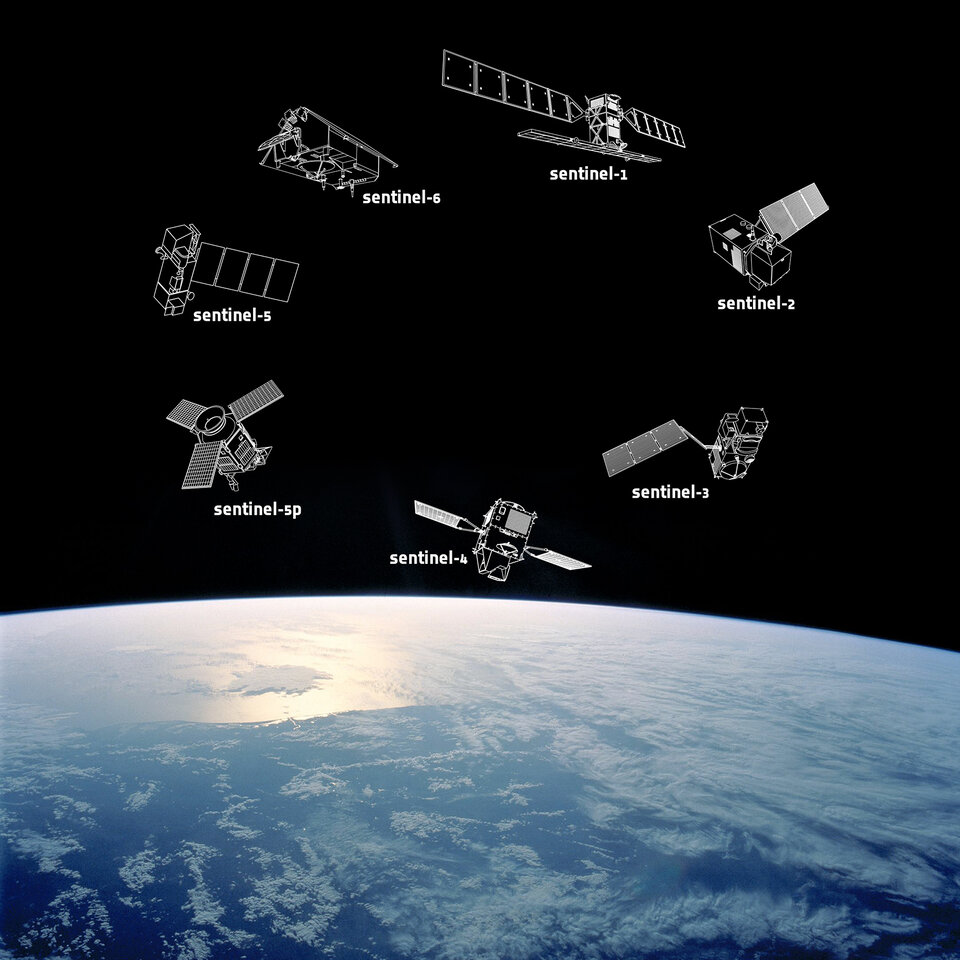Overview
The European Commission (EC) and the ESA are developing a large-scale program known as Copernicus to provide accurate, timely, and easily accessible information to improve the management of the environment, understand and mitigate the effects of climate change and ensure civil security. The EC is responsible for the overall initiative, setting requirements, and managing the services while the ESA is responsible for coordinating the delivery of data from upwards of 30 satellites.
Copernicus provides a unified system through which vast amounts of data are fed into a range of thematic information services designed to benefit the environment, the way we live, humanitarian needs, and support effective policy-making for a more sustainable future. These services fall into six main categories: land management, the marine environment, atmosphere, emergency response, security, and climate change. [1]
Sentinels
The ESA is developing several missions (aka Sentinels) for the Copernicus program that each contain a constellation consisting of two satellites. At present, three complete Sentinels are in orbit plus an additional single satellite, Sentinel-5P.
The Sentinel-1 satellites provide all-weather, day, and night radar images. They were launched respectively in April 2014 and April 2016.
The Sentinel-2 satellites are designed to deliver high-resolution optical images for land services. They were launched respectively on 23 June 2015 and 7 March 2017.
The Sentinel-3 satellites provide data for services relevant to the ocean and land. They were launched respectively on 16 February 2016 and 25 April 2018.
The Sentinel-4 and -5 satellites will provide data for atmospheric composition monitoring from geostationary and polar orbits, respectively.
Sentinel-6 will carry a radar altimeter to measure global sea-surface height, primarily for operational oceanography and for climate studies.
In addition, a Sentinel-5 Precursor mission has been developed to reduce data gaps between Envisat, in particular the Sciamachy instrument, and the launch of Sentinel-5. The Sentinel-5P satellite was the first Copernicus mission in orbit dedicated to monitoring our atmosphere and launched on 13 October 2017 from the Plesetsk Cosmodrome in northern Russia.
The Space Component is managed by ESA and serves users with satellite data available through the Sentinels and the Copernicus Contributing Missions at national, European and international levels. The ground segment, facilitating access to Sentinel and Contributing Mission data, completes the Copernicus Space Component which forms the European contribution to the worldwide Global Earth Observation System of Systems (GEOSS). [2]

